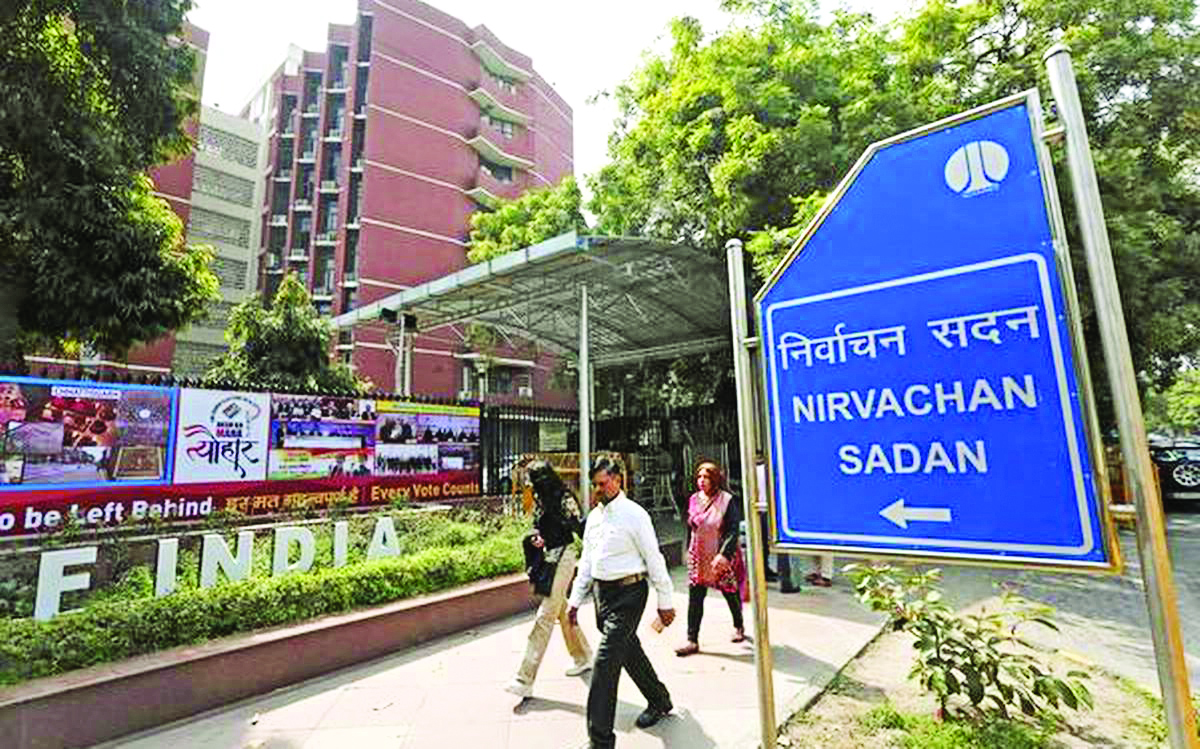EC to update voters’ list in J&K, Maha, Jharkhand, Haryana by July 1

New Delhi: The Election Commission of India announced on Friday the commencement of preparations for the forthcoming Assembly elections in Haryana, Maharashtra, and Jharkhand. As part of these preparations, the electoral rolls in these states, along with those in Jammu and Kashmir, will be updated with July 1, 2024, set as the qualifying date.
The draft rolls would be published on July 25, after which electors have the chance to file claims and objections till August 9. The publication of the final electoral roll will be done by August 20, as per the schedule.
This follows the precedent set during the recently concluded Lok Sabha elections, where January 1 was used as the qualifying date.
The qualifying date is crucial as it establishes the number of eligible voters on a given date within a state or across the country. With the terms of the current legislative Assemblies in Haryana, Maharashtra, and Jharkhand ending on November 3, November 26, and January 5, 2025, respectively, the elections are mandated to be conducted before these dates.
Additionally, Assembly elections in Jammu and Kashmir are to be held following the delimitation of constituencies. Prime Minister Narendra Modi, during his recent visit to the valley, affirmed that Assembly elections would be conducted soon in Jammu and Kashmir, with plans underway to restore statehood to the union territory in the near future. This was Modi’s first visit to the region after securing his third consecutive term as Prime Minister, where he underscored the importance of enabling the people of Jammu and Kashmir to elect their representatives for the Assembly.
In light of the substantial voter turnout in Jammu and Kashmir during the Lok Sabha elections, the Election Commission has directed that the electoral rolls in the union territory be updated with the same qualifying date of July 1, 2024. This move signals the imminent holding of Assembly polls in the region. On June 7, the Election Commission announced that it would accept applications from registered unrecognised political parties in Jammu and Kashmir seeking the allotment of ‘common symbols’ with immediate effect. This is in accordance with Para 10 B of the Election Symbols (Reservation & Allotment) Order, 1968, which allows any registered unrecognised party to apply for a ‘common symbol’ six months before the end of a legislative term.
An official clarified that since no Assembly is currently functional in Jammu and Kashmir, the Election Commission has issued a press statement inviting applications for symbols. Recognised national and state parties have reserved symbols, whereas registered unrecognised parties must apply for one. Unclaimed symbols are allocated to independent candidates by the returning officer.
Chief Election Commissioner Rajiv Kumar expressed optimism regarding the voter participation in Jammu and Kashmir’s recent Lok Sabha elections. He indicated that the Election Commission would soon initiate the process for Assembly elections in the union territory. While announcing the Lok Sabha election schedule in March, Kumar stated that conducting Assembly and parliamentary elections simultaneously was impractical due to logistical and security challenges.
The upcoming Assembly elections in Jammu and Kashmir will be the first since the abrogation of Article 370 of the Constitution in August 2019, which led to the bifurcation of the state into two union territories. Historically, electoral exercises in Jammu and Kashmir are spread over a month. Following the delimitation exercise, the number of Assembly seats increased from 83 to 90, excluding those allocated to Pakistan-occupied Kashmir.
In December, the Supreme Court directed the Election Commission to hold Assembly elections in Jammu and Kashmir by September 30. The Commission also announced that pre-updation activities would begin from June 25, focusing on setting up or rationalising polling stations in locations convenient to electors in group housing societies, slums, city outgrowths, and rural areas.



